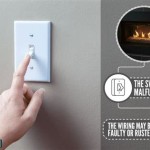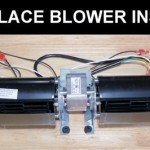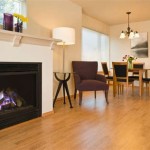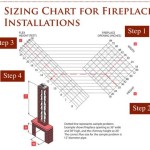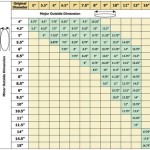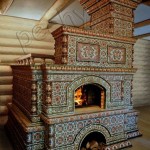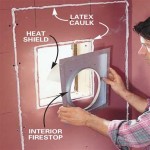Cost to Install Stacked Stone Veneer on Fireplace: A Comprehensive Guide
Installing stacked stone veneer on a fireplace can dramatically enhance its aesthetic appeal, transforming a plain hearth into a visually striking focal point. However, understanding the costs involved is crucial for budgeting and planning purposes. This article provides a detailed breakdown of the various factors that contribute to the overall cost of a stacked stone veneer fireplace installation.
The overall cost of installing stacked stone veneer on a fireplace is influenced by several key elements, encompassing materials, labor, and project-specific considerations. These factors interact to determine the final price, requiring careful evaluation for accurate budgeting.
Material Costs: A Breakdown
The primary component of the overall cost is the stacked stone veneer itself. The price of stone veneer varies widely depending on several factors: the type of stone (natural or manufactured), the quality of the stone, the pattern, and the quantity required. Natural stone veneer, being quarried directly from the earth, generally commands a higher price point compared to manufactured or faux stone veneer. This difference is attributed to the inherent properties of natural stone, including its unique variations in color, texture, and veining, as well as the labor-intensive process of extraction and preparation.
Manufactured stone veneer, on the other hand, is crafted from a blend of concrete, aggregates, and pigments, molded to replicate the appearance of natural stone. Its primary advantage lies in its affordability and consistent appearance. It also tends to be lighter than natural stone, which can simplify installation and potentially reduce structural support requirements.
Beyond the stone veneer itself, other essential materials contribute to the overall cost. These include mortar, which binds the stones together and secures them to the fireplace surface; metal lath, which provides a stable and supportive base for the mortar; and other supporting materials like fasteners, sealants, and potentially a moisture barrier, depending on the existing fireplace structure and the surrounding environmental conditions. The specific types and quantities of these materials will vary depending on the scope and complexity of the project.
The square footage of the area to be covered will significantly impact the quantity of veneer required. Accurate measurements are crucial to avoid underestimating or overestimating the necessary materials. Waste should also be factored into the calculation, as some material loss is inevitable during cutting and fitting. A general rule of thumb is to add an additional 5-10% to the total square footage to account for waste.
Here's a tentative cost breakdown for materials, considering a fireplace with a surface area of approximately 50 square feet:
*Natural Stone Veneer:
$15 - $30 per square foot. Total cost: $750 - $1500 *Manufactured Stone Veneer:
$8 - $15 per square foot. Total cost: $400 - $750 *Mortar:
$20 - $40 per bag (typically requiring 2-3 bags). Total cost: $40 - $120 *Metal Lath:
$20 - $30 per roll (typically requiring 1-2 rolls). Total cost: $20 - $60 *Fasteners, Sealant, Moisture Barrier:
$50 - $100Therefore, the total materials cost could range from approximately $860 to $1780 for natural stone veneer, and from $510 to $930 for manufactured stone veneer. These figures are estimates and are subject to change based on specific product choices and local market prices.
Labor Costs: Professional Installation vs. DIY
Labor costs represent a significant portion of the overall expense associated with installing stacked stone veneer on a fireplace. The primary determinant of labor costs is whether the project is undertaken by a professional contractor or attempted as a do-it-yourself (DIY) project. Hiring a professional ensures expertise and adherence to industry standards, but it also entails a higher upfront cost.
Professional installation typically involves hourly rates or a fixed project fee. The hourly rate for a skilled mason or contractor can range from $50 to $100 or more, depending on their experience, expertise, and the prevailing market rates in the area. A fixed project fee provides a more predictable cost estimate, but it's crucial to obtain multiple quotes from different contractors to ensure competitive pricing.
The scope of the labor involved includes several key tasks: surface preparation, which may involve cleaning, leveling, and applying a scratch coat; cutting and fitting the stone veneer to achieve the desired pattern and aesthetic; applying mortar and adhering the stones to the fireplace surface; grouting or dry-stacking the stones; and cleaning and sealing the finished surface. Each of these steps requires skill and attention to detail to ensure a durable and visually appealing result.
Taking on the project as a DIY endeavor can potentially save on labor costs, but it requires a significant investment of time, effort, and potentially specialized tools. Furthermore, a DIY project may not result in the same level of quality and durability as a professional installation, particularly if the individual lacks experience in masonry or stone work.
Potential savings from DIY must be weighed against the potential risks, including improper installation, material waste, and the possibility of structural damage. If unsure about the skills required, it is advisable to consult with a professional or seek guidance from experienced DIYers.
Here's a tentative cost breakdown for labor, assuming professional installation:
*Hourly Rate:
$50 - $100+ per hour *Estimated Project Time:
16 - 32 hours (depending on fireplace size and complexity) *Total Labor Cost:
$800 - $3200+Therefore, labor costs can range significantly, potentially exceeding the cost of materials. It's imperative to obtain detailed quotes from multiple contractors, outlining the specific tasks included and the estimated timeframe for completion.
Additional Costs and Considerations
Beyond the core material and labor costs, several additional factors can influence the overall expense of installing stacked stone veneer on a fireplace. These factors often represent unforeseen or overlooked expenses that can significantly impact the budget.
If the existing fireplace structure requires modifications or repairs, these costs must be factored into the equation. This could include repairing cracks or damage to the existing brickwork, reinforcing the firebox, or altering the framing to accommodate the added weight of the stone veneer. Structural modifications can be particularly costly, requiring specialized expertise and potentially involving permits and inspections.
Permitting requirements vary depending on local building codes and regulations. In some jurisdictions, a building permit may be required for fireplace renovations, particularly if the project involves structural alterations or modifications to gas lines or venting systems. The cost of obtaining a permit can range from a few hundred dollars to several thousand, depending on the complexity of the project and the local permitting fees.
The geographical location can also influence the overall cost of the project. Labor rates and material prices tend to vary depending on the region. Areas with a higher cost of living generally have higher labor rates, while material prices may fluctuate based on transportation costs and local availability.
Accessibility to the fireplace can also impact the labor costs. If the fireplace is located in a difficult-to-reach area, such as an upper floor or a tight space, it may take longer to complete the installation, increasing the labor costs. Similarly, if the project requires extensive preparation or cleanup, these tasks can add to the overall expense.
Sealing the stone veneer after installation can protect it from moisture damage and staining, prolonging its lifespan and maintaining its aesthetic appeal. The cost of sealant and application will vary depending on the type of sealant used and the size of the area to be sealed.
Disposal fees for removing old materials, such as existing tile or brick, should also be considered. Some municipalities charge fees for disposing of construction debris, while others may require the use of a designated waste disposal service.
Contingency funds should be allocated to cover unexpected expenses or unforeseen problems that may arise during the installation process. A general rule of thumb is to set aside 5-10% of the total project budget for contingency purposes. This buffer can provide peace of mind and prevent cost overruns in the event of unforeseen complications.
Therefore, when planning a stacked stone veneer fireplace installation, it is essential to consider all of these potential additional costs and factors to develop a realistic budget and avoid unpleasant surprises.

Stone Veneer Stack Glacier Mountain View

Thin Stone Veneers Make A Fireplace Update Easy

Diy Stacked Stone Fireplaces On A Budget Msi Blog

Fixr Com Stone Siding Cost Veneer Per Square Foot

How To Install A Stacked Stone Fireplace Practical Whimsy Designs

Thin Stone Veneers Make A Fireplace Update Easy

Stone Veneer At Com

Natural Stacked Stone Veneer Fireplace Ideas

Natural Stacked Stone Veneer Fireplace Ideas

Stone Veneer Stack Midnight Mountain View
Related Posts

